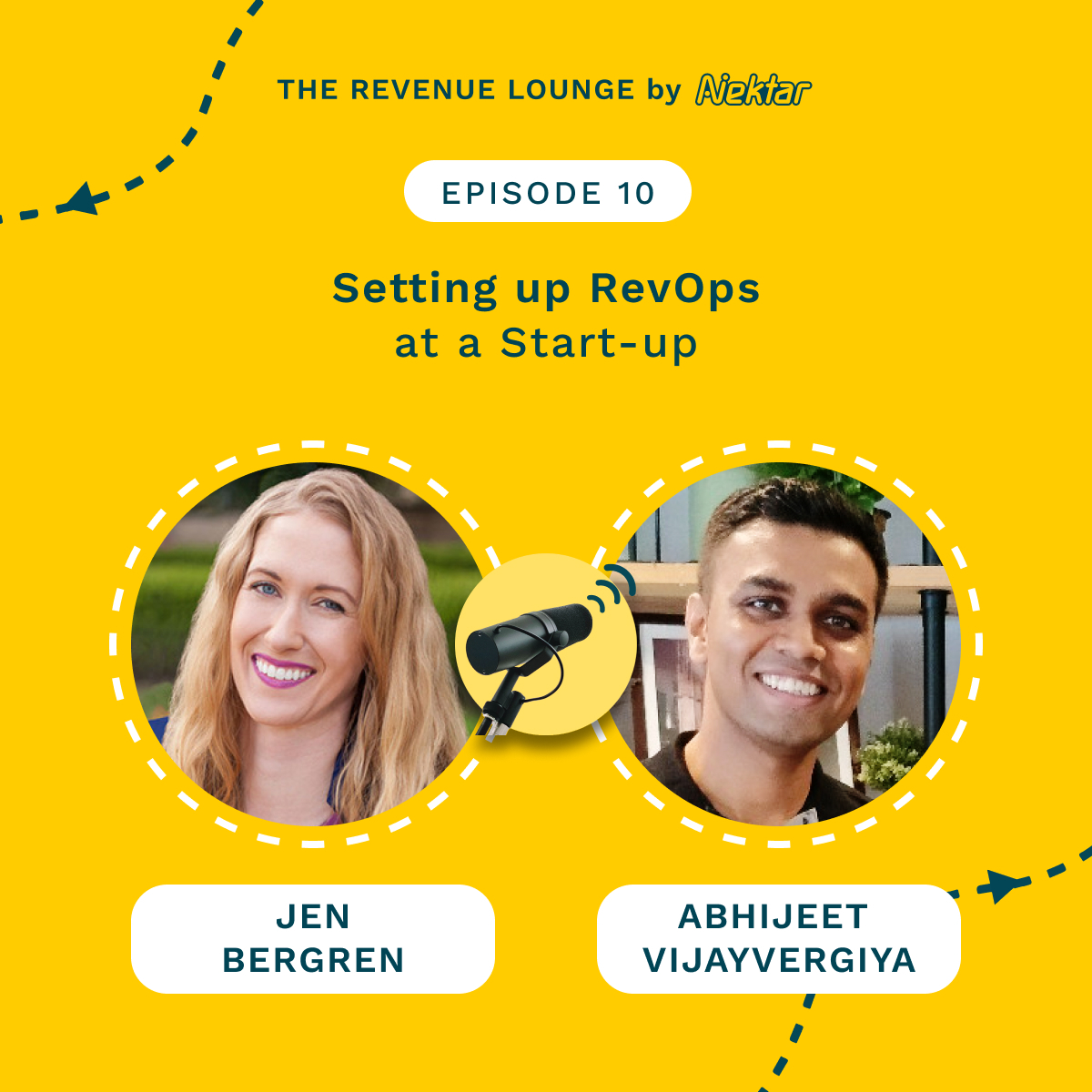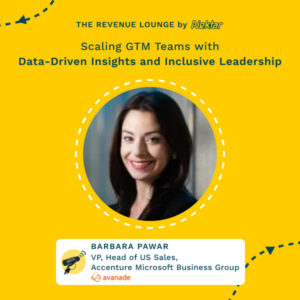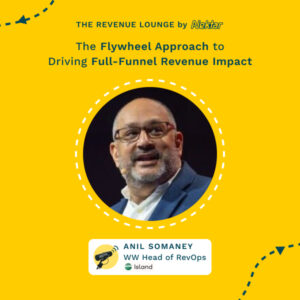Redefining Demand Generation: A Revenue-Centric Approach to Driving Growth ft. Irina Jordan
January 15, 2025
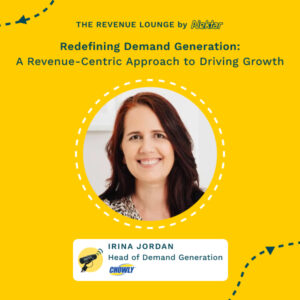
About
The Revenue Lounge
The podcast covers stories from leaders across RevOps, Sales, Customer Success, GTM, Data and Marketing about what drives these functions and what advice they would share with our listeners. With 3 seasons recorded, the podcast currently features 50+ enterprise leaders in the B2B SaaS domain. Tune in to hear from the best in the business
- Demand generation is about driving measurable growth across the customer lifecycle.
- MQLs are outdated; focus on actual opportunities instead.
- Building trust with customers is essential for demand generation.
- A holistic approach to demand generation includes retention and expansion.
- Attribution models can distract from the real goal of revenue growth.
- Understanding your ideal customer profile is crucial for effective engagement.
- Deal size and expansion potential are key metrics for success.
- Leverage your strengths and seek help where you are weak.
- Mentorship can significantly accelerate career growth.
- Developing a common language within teams can facilitate better collaboration.

Randy Likas (00:01.902)
Traditional approaches to demand generation are no longer enough. The lines between marketing and revenue teams are blurring, and the need for alignment has never been greater. Companies are realizing that demand generation isn’t just about filling the top of the funnel. It’s about driving measurable growth across the entire customer lifecycle. Hello, everyone. Welcome to the Revenue Lounge. I am your host, Randy Likas. And in this episode, we will dive into redefining demand generation through a revenue-centric lens. We’ll explore what it takes to build a holistic
360 degree view of demand generation strategy that not only fuels new pipeline, but also strengthens retention and expansion efforts. And joining me today is Irina Jordan. Irina is the head of demand generation at Chowly. She drives Chowly’s business growth by developing and executing strategies that increase market presence and generate demand. She’s also a member of GoToMarket Fund, Women in Revenue and Pavilion. Irina, welcome to the Revenue Lounge and thank you so much for joining us today.
Irina Jordan (00:58.349)
Thank you, Randy. Very excited about this conversation, especially as we are roaring into the next year.
Randy Likas (01:04.836)
Yeah, 100%. Everybody’s in 2025 planning right now. So I usually like to start and just ask you to maybe give us a little bit of a background on your career journey and your current role at Chowly.
Irina Jordan (01:19.769)
I am not a classically trained marketing person. I came from the old USSR and I did get my business education, my second master’s degree here and since then I’ve been across industries. My core specialty is software as a service. What industry is actually irrelevant because a SaaS is a discipline that’s agnostic. You can apply that across any industry as long as you know the fundamentals. At my current role, which I’m actually really excited
how my role is titled head of Demand Gen. It creates a very specific spec and I’ve been VP of marketing, I’ve been a CMO, I’ve been director, like I’ve went through all the traditional, but this is like my favorite role to date because it really sets the spec for everybody involved because they already kind of have their own definition of Demand Gen is and you come in and you set your boundaries and kind of your blueprint for that. And especially in the space, Jellies in the restaurant tech space, we are
actually launching an off-premise platform. We’re working on a massive product launch for the next year, which I find extremely exciting, especially from the demand-gen perspective. And this is a very unique industry as well, as you might imagine. Food gets very emotional, so Russian tech gets emotional by default. So for me, the whole journey just being in the space, think software as a service is here to stay no matter how many kind of mutations it’s experiencing, especially with no gen
Randy Likas (02:35.138)
Yeah.
Irina Jordan (02:49.633)
and whatnot, but their fundamentals will always be evergreen. As long as you understand how to really work them and they’re kind of the best approaches, you will shine in any industry and in any role, especially in demand gen.
Randy Likas (03:05.476)
So I was taking a look at the Charlie website in preparation for this conversation. And your platform serves restaurants and restaurant operators, and I would imagine of all sizes. So I’m curious, do you have a demand gen motion that focuses on different segments, SMB, mid-market enterprise, where maybe you’re selling to large chains or companies that
maybe have multiple buying committee members as part of a decision to bring you on.
Irina Jordan (03:39.339)
Our ICP, ideal customer profile, is an independent restaurant operator. from the definition, it’s one, we call it one to five locks. One to five locations. It can be, you know, your mom and pop in your neighborhood or somebody who’s starting to expand because, and it’s usually regional or local because it’s usually one person that oversees those locations and they start scaling up. So as such, you literally talking to people who are on the ground, on the floor, sometimes stepping.
at the last minute to cover some server, but they’re also really savvy business practitioners. I’d say…
The real estate agents and independent restaurant operators are the two toughest audiences. If you can be profitable in that industry for this particular ICP, you can be profitable in any kind of market because you’re dealing with people who know the value of the dollar. They’re working it, they’re grinding it, and especially restaurants in the United States post pandemic, these people are so resilient and you really have to earn their respect. So for me, our ICP is very exciting because you eat at your
mom and pop shop, a restaurant, know, or do their takeout, like you really know who those people are. So for me, being able to help with what Charlie Off-Premise platform is offering is extremely gratifying.
Randy Likas (05:01.796)
Yeah. You had mentioned in sort of our preparation for this that your role is quite unique in that you’re revenue focused, right? And I think a lot of times people think of demand gen as strictly being maybe lead or, you know, top of the funnel. Can you explain a little bit about how that differs from maybe a traditional perception of demand gen roles?
Irina Jordan (05:24.153)
Well, for starters, there is no such thing as MQLs that don’t exist.
Randy Likas (05:27.81)
Love it. Yup.
Irina Jordan (05:30.013)
And I’ve never been a fan of them because there is so much hard debate about it. And it’s a completely pointless debate. For me, I am part of the revenue team and revenue team is CS, customer success, sales, activations team and moi and my team. So in our case, my primary audiences are salespeople in our customer success and primarily outside salespeople, because I’m a huge fan of the bow tie model where you have to really bring in that new, but you also
you need to cultivate your existing customer base because if you’re bleeding, no matter how much you’re bringing, you’ll still be like, your bucket will be leaking. So for me, it’s like, how can we create this 360 demand gen holistic experience, even though demand gen usually is not new, but what about upsells? What about expansions? Again, our people are independent restaurant owners. What about that second location, third location, fourth location, fifth locations? We want them to grow with us. So for me, that is exciting. So in my case,
I
My arbitrage is my salespeople. So my, actually have a base salary and I also have variable. have a monthly quarter for SQLs and the definition of the SQL, the Charlie is an actual opportunity. So when a sales guy comes in and marks a lead that came in as an opportunity, that is what I get counted on. So I don’t get to decide what constitutes what I bring to the table. It’s the.
people on my team who are really really good at their jobs make that decision for me and that makes me accountable for how I structure the whole DevonChain program because again no MQLs and not technically even SQLs because they tell me what they find a viable conversation to have.
Randy Likas (07:19.854)
Yeah, first of all, amen. I love the fact that you’re not focused on MQLs. I 100 % agree with you that it’s kind of a pointless metric. And so we’re focused on opportunities. I’m curious how that manifests in, you know, when you generate a lead, are you doing opportunity, are you kind of starting at opportunities and sort of, and having maybe.
early-staged, know, zero value opportunities that you’re trying to generate. Like, does demand manifest, you know, as a lead, per se? If it’s not an MQL, what is passed over to the salesperson?
Irina Jordan (08:01.749)
It’s actually very easy. A lot of things stay with me. We have, again, because we work in a very particular industry, we have certain data points that need to be collected for our salesperson to have a meaningful conversation, like point of sale. That’s a restaurant. You your square, your toast, your spot on, where are you located, how many locations. And also, we have very specific spots on the website where people can submit that kind of form. And it’s really bottom of the funnel submission. Anything that comes
comes through like virtual workshops, trade shows. that, for example, if somebody comes to a booth and has a conversation with one of my sales guys, if they cannot book it on their calendar and know what exactly that conversation is gonna be about, it stays with me. So demo booked with the person giving full consent and raising their hand and saying, I want to talk about Charlie of premise platform. That is what constitutes an opportunity where salesperson says, this is worth my time. I’m willing to spend my
30, 45 minutes having this conversation.
Randy Likas (09:03.47)
Yep. Yep. Got it. So you mentioned events. What are some of the other channels that you use to develop interest and demand?
Irina Jordan (09:15.287)
Another controversial topic is the whole definition of what is brand or brand campaign. For me, it is intertwined with demand gen because if you don’t earn the trust and respect of the market and you buy while they’re doing this buyer’s journey, especially with people like Russian owners, you’re dead in the water before even they have the conversation with you. So you have to work extra hard to get the demand gen going because you have to persuade them that you are trustworthy and you’re reliable. So for me, thought leadership and collaborations with
people in the space are very critical. And again, people say, how is that demand yet? I’m like, that’s my bread and butter. If my top of the funnel based on very solid fundamentals of we create the content that really hits close to those independent restaurant operators and they can come to us. Like my kind of one of the great offerings we’ve been doing this year is profitability workshop. We don’t talk about Charlie, what we talk about it. How do you structure your operations? How do you structure your off premise? What things you need to pay attention to?
What is your hospitality moment? What makes you unique? What is your digital storefront? How are you taking care of your customer reviews? How are you creating your kind of experience digitally, not just your food traffic in store? And so we come in with, we want to educate you because now we can have a very equitable conversation about how we can help versus just being a vendor. Like vendor is like really bad. You want to be a partner, you want to be a trusted advisor. So I’m really big on organic, thought leadership, collaboration.
with people in the space, working closely with customers who come in and share their experiences, success stories. And I’m really lucky because my CEO Sterling, he’s a really good ambassador, he has really good presence and he’s really active on LinkedIn, so that helps me. So we work together in structuring content strategy where he’s driving it and we are driving as a brand and becomes very cohesive because again, without the brand, you’re of many and then you have to struggle so, hard.
Randy Likas (11:12.814)
Yep. Yes, absolutely. And very interesting. So you mentioned a few minutes ago about the bow tie. And I’m also a very big fan of Winning by Design and how they talk about both sides of that bow tie. Can maybe you elaborate a little bit farther on how you address both sides of that model, generating new opportunities, but then once you land a customer, retaining and expanding with the customer base.
Irina Jordan (11:41.463)
Not only I’m a huge fan of WinningBase Design and Jacko, I’ve taken this class multiple times being a Pavilion member, and I’m also the ambassador because again, I’m really, really big. I have the book right there on my table. Like I’m huge. But from my perspective is, and again, everybody understands the lifetime value of the customer or the expansion of existing customer base. For me, the definition of the bow time, it’s that holistic flywheel. And in my case, those profitability
Randy Likas (11:55.108)
Man.
Irina Jordan (12:11.387)
workshops, we want our customers to be the first to know about that. When we go to the shows and make sure we have complimentary passes, especially for people who are in the region, that they can come for free and be part of that experience. encourage, we actually have a lot of, like we have momentum built in where we can record conversations. We have a lot of kind of automation around really capturing the sentiment. And when I see something interesting, it’s either a success story or interesting feedback, or even like going on social media and like shaping that experience up. We really begin
recognizing our customers. And it sounds maybe hokey, but there are so many specialty food days in a month, know, chocolate cake, muffins, coffee, know, sandwich. We showcase our customers that way and we take them across platforms. Most of them are active on Insta and Facebook. Some of them are active on Twitter and LinkedIn and we’re respectful of that space. So for us, it’s just day to day. And again, for me, demand gen is to have this, you know, NPS, how our customers viewing us, because for me, that makes my job easier because
as we are an off-premise platform and as they’re growing, that is additional money for the company. Because for me, ultimately, I look at is the company growing? How is our EBITDA? Is our Northstar meeting that Northstar goals? So yes, I need to bring news SQLs, but at the end, if we are losing money, I can’t be on the chopping block because I’m very sensitive to what are the co-functionalities and how they’re perceived, and I’m very pragmatic about it.
So we need to make sure that it’s a 360 view of our customer base and prospective base because they’re just going because your existing customer becomes new customer and your customer and it just goes in a circle and you want that to be a very cohesive motion.
Randy Likas (13:41.623)
Yeah.
Randy Likas (13:57.09)
Yeah, absolutely. couldn’t agree more with you. There’s a big debate right now when we talk to different companies around how they feel about attribution and attribution models for marketing. And I know you’ve got some strong opinions on that. Why do think this debate sort of misses the point on attribution? And how should companies refocus their efforts?
Irina Jordan (14:23.373)
It’s again, you know, the whole opposition sales versus marketing. And I’m like, why? What’s the point? I mean, if the company is not doing well, there will be a rework. bunch of salespeople will be fired and a bunch of market people, like nobody wins. So for me, the perspective is as the revenue team, what are the things that are working well and what can we amplify more and what can we bring to the table as a team? So for example, and people’s like, this person who could just came in as an unbound lead, I had like a very spirited conversation with them, maybe at a trade show.
Randy Likas (14:34.082)
Yep. Yep.
Irina Jordan (14:53.845)
six months ago tried to cold call them and now I’m like that is the whole multi-touch attribution where if you want to take credit for that I don’t really care for me the goal is this person talked to you so awesome social so sudden event came to the booth had a conversation maybe part of the workshop got an email and they’re like okay I’m ready and I’m like I don’t care how they ended up talking to us so the whole attribution it’s nice for and for me the only interest is what’s working at this particular moment because seasonality is a consideration
economy is a consideration, especially for restaurants. You have to really be mindful of the independent SMBs, what their sentiment is, like you want to pay attention to that. But besides the point is like what works right now, but how they end up talking to you is somewhat irrelevant because most likely it wasn’t just one magic unicorn kind of touch and they’re like, yeah, I totally want to talk to you. It took a few things for them to warm up to you word of mouth and they needed extra nudge, whatever that is, as long as we can create this experience.
as a revenue team together, the whole attribution thing becomes irrelevant.
Randy Likas (15:59.16)
Pointless, yeah. And I think it helps quite a bit when you think about it as far as how your goals, your goal on pipeline revenue, not MQLs, right? And so that is very much, I think, the right approach. But then how do you, as you have different investments that you make in different marketing programs, how do you know which ones are
are working, which ones to double down on, which ones to cut. If we’re not thinking about attribution, maybe marketing influence. We’d just love to speak about that a little bit. How do you know where you should keep investing or where you should maybe reapply money?
Irina Jordan (16:43.801)
Sterling, our CEO, used to be an actuary and he’s a total data nerd. So we have very good set up in Sigma. So we track everything by channel. How leads came into us? Is it outbound? Is it inbound? If it’s inbound, is it from a partner? Is it from Google Ads? Is it organic? Is it a trade show? So that accountability is real time and everybody can go and look at that dashboard. For me, the only point of reference is what I’m seeing pop and play on that. Example of the trade show, especially when
came in I’m like how much did you close? Show me the money. If I’m not showing the money guess what? We are not going to the trade show and not only it needs to cover the cost of the trade show it needs to be at least 3x to 5x to make it all worthwhile and that was an interesting kind of and I again another controversy people’s like how can you report to CRO? Tom, I report to the chief revenue officer and the guy is awesome so for me we have a very pragmatic approach to things and we have really good team
kind of discussion about what works, doesn’t because he’s very pragmatic, I’m very pragmatic and we get it done. Like he’s one of the best people I worked kind of report to because we get it. So we had this conversation and there were some events that Charlie has been going for many years and when I went I’m like I’m not seeing you closing. Guess what? You will not be going to that. It’s like I get it. I’m like let’s try this instead. So it is that transparency of how much you spend
Randy Likas (18:04.44)
Mm-hmm.
Randy Likas (18:07.938)
Yeah. Yeah.
Irina Jordan (18:13.625)
how much you get back. And it can’t be just one-on-one map out. It needs to be not just the whole, what kind of annual recurring revenue you’re gonna get out of it. What is your projected retention for that customer? So you look at the entire life cycle and then you kind of go back from that.
Randy Likas (18:28.898)
Yep, very good. So there’s a big challenge in SaaS right now where a lot of companies that were heavily outbound focused in terms of emails and calls and things like that, there’s been platforms like Outreach, SalesLoft, all those platforms that help develop a lot of automated messaging. OK, so what we’re seeing is that
Irina Jordan (18:49.741)
We have sales left, I’m aware. Yeah.
Randy Likas (18:55.726)
people are just kind of becoming immune to those because there’s been misuse of those platforms, And there’s so much now, and then there’s AI SDR process, just more automation. And people are seeing these and they can recognize them a mile away and they apply their mental spam filter and they just kind of ignore it or adore it. And I imagine that if you’re calling on restaurant operators who are very busy managing their business, that they don’t necessarily have a lot of
to respond to a lot of these automated messages. So I’m just curious to get your opinion. You use Salesforce. How are you using it differently today than maybe you were using it a year and a half, two years ago? And what are your thoughts on sort this general trend that we’re seeing? There’s a term that was coined, like we’re in this period of the great to ignore, which is it’s just so hard to get people to engage. We love your perspective on that.
Irina Jordan (19:52.473)
You have to be super contextual to what your ICP is. In your case, you have much more sophisticated audiences, kind of more B2B buying, know, corporate committees. In our case, we literally have people who wash dishes sometimes. And those are the people who are best reached by phone and text. You literally, while they’re like driving somewhere or in the restaurant, you catch them and then you schedule something with them. And I’ve learned that by actively engaging with our customers and figuring out.
even for customer success stories, they will be like, yeah, I’m talking to my contractor, I’m second location, you got 15 minutes, so let’s get going. And he’s literally like with a plumber. I’m like, email comes secondary, social comes third. in terms of our sales guys are very sophisticated in terms of how they approach it and they do have sequencing and everything, but for us, it’s just a very supplemental piece. So you have to look at what your ICP is and play with that. Restaurant industry is not a
sophisticated as you know, a lot of like, if you were catering to me as, know, a B2B marketing executive, very different conversation. I would know when your LinkedIn post is AI generated and when you send me a sequence that’s completely bonkers. We don’t do that with restaurant tech because they don’t even read that email. Even if you write them the most heartfelt, we love you to death, they may not even get to that. So for me, it’s all contextual, it’s like how you’re looking at your tech stack, but you’re also looking at your customer profile and what
Randy Likas (21:13.356)
Yup. Yup.
Irina Jordan (21:22.297)
makes more sense and sometimes it’s hard SMBs are hard they sometimes may not be they may be old school they’re still writing things on paper so your GNI kind of useless so it’s very contextual to your market and it’s very contextual what been successful and again what are your salespeople are good at are they good at cold call following up with email then follow up and schedule a demo great but you need to understand how also that works
Randy Likas (21:48.396)
Yeah, so it sounds like you’re very in tune with your IPC, how they work. It sounds like your sequences are probably more heavy on the call side of things than they are on the email side of things,
Irina Jordan (22:02.315)
Email usually is a follow up to a call, not other way around.
Randy Likas (22:05.57)
Yeah, yeah, exactly. Great. That’s really interesting. So we talked a little bit about some of the metrics, and I just want to make sure we’re capturing all of them. So at the end of the day, the focus really is on whether or not the company is thriving. Are we growing? Are we expanding? Are we retaining? We talked about pipeline generation. We talked about opportunity generation and ultimately revenue. Are there any other metrics that you look at?
or are measured on as part of your demand general.
Irina Jordan (22:38.041)
deal size because again, we are a SaaS company and
Randy Likas (22:39.086)
deal size.
Irina Jordan (22:47.053)
Deal size matters. Any overcurrent revenue can be piddly or can be significant. Even in SMB, if you’re closing five locks, five locations, very different from one. So for me, would, my, again, part of the third leadership and brand drive and collaborations and email marketing is enriching leads. So when those leads come to my sales guys, they’re juicy. They’re not like somebody who’s like struggling for a dollar and like piddling over like a $19 discount.
I mean you have to be very mindful that there are different, you know operators in the space so for me if I can get across the lead that as a platform lead and it’s really savvy operator and they stay with us for a long time so it dress both sides of the bow tie that’s like that’s my ultimate that’s my no-stop because even the leads who close are not equal so for me that deal size and
Randy Likas (23:38.532)
Yup.
Irina Jordan (23:46.907)
Expansion potential is significant and that’s what I look at as which audiences I am reaching as part of my Devonjin program that allows our sales guys with the quota quicker.
Randy Likas (23:57.476)
One metric that typically a lot of people will look at, and we didn’t discuss, I’m just curious, is sail cycle length. And so just curious, your reps, do they turn over their pipeline quickly? Like maybe within, yeah, they do, yeah.
Irina Jordan (24:14.977)
OCC, one-call close is a thing.
Randy Likas (24:18.05)
Okay. I love that. Okay, so before we wrap up the conversation and transition to what we call the lightning round, which is a little bit more personal than it is functional, what haven’t we talked about yet as it relates to demand generation, your role, metrics, anything that maybe I should have asked you that I haven’t that you thought would be useful for the audience?
Irina Jordan (24:44.077)
I think marketing professionals, especially marketing executives, again, having been CMO for quite a while prior to this role, they have a certain inferiority complex where they feel they have to prove themselves, especially in front of the board, in front of the CEO, CRO, CFO, CEO. They almost feel that they’re like nobody understands them. And for me, it’s like you bring money to the table. Doesn’t matter how fancy, you know, your campaigns are. You need to really showcase your worth by what you bring to the table.
monetarily and it can be like a hard pill to swallow because a lot of marketing is still like I’m all about revenue marketing I’ve been about revenue marketing for the past 10 years that that’s how it is so for me was a natural progression but for a lot of it’s a struggle I think the debate will go away when the marketing becomes a revenue focus function
Randy Likas (25:34.924)
Yes. I did say that was the last question, but I have one more. And there is so much conversation, excitement around the use of AI, right? And we talked about momentum earlier, is fantastic tool. We use it as well. Curious what opportunities, if any, do you see AI playing in your industry and as
be part of the whole revenue marketing side of things.
Irina Jordan (26:07.833)
I’m a huge fan, again, if we think about GNI critically, it’s really synthesizing all the human-generated content and giving it back to you. So it’s kind of cliff notes of the human knowledge. So I find it very valuable and it was funny because I was in the CMO coffee talk this morning and one of the suggestions that everybody loved, they’re like, put in your board deck with all the slides, but also describe the personality of your board members, what they didn’t like about your deck in the previous
that you had with them and ask your tool to give you suggestions on how to make it more compelling for those board people, personalities, their trigger points, their pain points and what they call down on. I mean, why not? So for me, it’s just more, I look at it as a guide and as an advisor, but it would never be my final step. Whether it’s content or sequencing or Intel or data enrichment or competitor research or SWOT analysis, it’s very,
Randy Likas (26:54.692)
Mm-hmm.
Irina Jordan (27:07.767)
powerful tool but you have to and that’s why the human curation becomes so valuable as long as you understand where the relationship is you embrace it it’s like with money as long as you respect it and you understand how it works it’s gonna be a magic magic for you but if you like either stressed or overuse it and heavily rely on that where people start blocking your LinkedIn post because you really should not be doing that so you have to be very very kind of like I’m a human this is my tool very valuable use it wisely
Randy Likas (27:36.644)
Yeah, love that. And great suggestions as well as thinking about your board personalities and using it as part of the prompt. I think that’s fantastic. Okay, let’s transition over to the lightning round. As I said, it’s a little bit more personal. So, would be curious, what is the favorite part of your job at Chali? Yeah.
Irina Jordan (27:58.551)
Making money.
Not just for me, but for the company, because I’m very kind of like, I’m very, again, pragmatic, but I’m also very like in the dirt. Like my sales guys can tell me everything. If they have feedback, criticism, suggestion, like I’m on their daily huddles, on the sales calls, like I am part of the team. So for me, if I can help them meet their quarter and I can help company make money and it can help company to become more competitive in the space that we are establishing ourselves in.
that’s a win. Everything else is just kind of cheery on top.
Randy Likas (28:33.422)
Yeah, great, love that. There’s a flip side to that question, which is either least favorite part, or sometimes I ask the question a little bit differently, which is like, what’s really hard about your job?
Irina Jordan (28:45.965)
Just dispelling all the things we talked about again.
I’m like, we don’t need to talk about, know, get into the rabbit hole about what is an MQL, what is an SQL, what is an a sales accepted lead. I’m like, did you have a demo? Yes. Did you close the deal? Yes. How much money? How was that is literally what I will ask. So for me, it’s just that educational chasm of what demand gen is, because a lot of people look at it in a derogatory fashion. They look at it as like a bottom feeder mechanism. And it is, it’s just the optics that’s just been propagated.
so long. For me it’s the full life cycle just expressed in dollar signs.
Randy Likas (29:23.778)
Yep. What’s one book that you’ve read in the recent past that you’ve really loved and maybe want to share with the audience?
Irina Jordan (29:33.817)
Every December I reread three books Atomic Habits, The Alchemist and Influence and they go very well together. Find your destiny, practice on the regular. I just did my 5000th ride on Peloton, part of my daily routine. Never walk away, never miss a workout. the Influence, mean Robert Sheldon, it’s a classic. If you don’t know like, you know, social, peer, authority, like basics.
You’re missing out. You have to know that stuff.
Randy Likas (30:03.382)
Yeah. Yeah. And I love the idea of rereading it once a year, right? Because there’s so many things that you love, but other things have gotten in the way. Maybe you’ve gotten away from it, and it’s a great reminder to go back and do that. So that’s a fantastic point. Any advice that you’ve received from someone that has stayed with you that maybe you’d want to share with the team? Things that maybe have impacted the way that you work.
Irina Jordan (30:08.312)
Yes.
Randy Likas (30:33.22)
or keep us a general philosophy.
Irina Jordan (30:36.729)
Play on your strengths.
If you suck at something, find somebody who’s really good at it. The whole, know, let’s grind to get bad at something, you suck at it. I’m like, that’s stupid. But if you’re really, really good at three to five things and you are superior to anybody because you keep accelerating that strength of yours because it’s your muscle, your atomic habit that you keep practicing, I don’t believe in struggle. I mean, yes, you should have some and stretch goals, but like you’re good at something. Do that. You suck at something. Find somebody else and break
into your team or finding a resource in the company who can help you with that. You don’t have to make it hard. Play on your strengths.
Randy Likas (31:17.442)
Love it. Any advice that you’d give your younger self, right? So if you can go back 25 years and go and talk to the younger Irina at that point, what advice might you give yourself having the hindsight of everything you’ve learned over the past several years?
Irina Jordan (31:33.113)
I wish I had a mentor early in my professional career. I did have tremendous mentors, but they came at midpoint for me, like early thirties. I think the whole mentorship from people who kind of come organically into life is really, really valuable. And I think my career would have been even more accelerated as a result of that than, I mean, you have to figure out your stuff on your own, but having a mentor who really kind of gets you and really supports you, I think. So I would recommend
somebody who’s studying out to look for somebody who can be your mentor or even ask for that honor, like be proactive about it because that will really help you.
Randy Likas (32:12.58)
What about people that are maybe working at organizations where the company is very MQL focused and they know that there’s a better way, they know that they should be doing things differently, but they’re not quite sure how to change that. Any advice in terms of how someone might go about influencing internally new ideas or innovating ways to do things a little bit different?
Irina Jordan (32:42.073)
I actually got Tom, my CRO, take revenue architecture course like six months ago. And he was already, he’s a smart guy and we were already on the same page, but having the whole, you know, six data, six models to work off and have this conversation around that. So I think I’m a huge fan of professional development. My goal is to take five LinkedIn courses each month. And I’m like at over 500, know, pavilion, revenue architecture. So for me, it’s that developing the common language, so instead of you being the lonely wolf.
trying to persuade somebody, go to something that’s already established in the industry and take that together and have that conversation because it’s the second opinion where you can have better conversation, otherwise you just get frustrated.
Randy Likas (33:23.257)
Yeah. Well, Irina, this has been a great conversation, not only from the demand gen side of things and thinking about revenue holistically. I thought you gave great advice there. But also in the lightning round, even though they tend to be sort of lighter, I think you provide a lot of really great insights for the audience. So I just want to say thank you very much for your time. I really enjoyed our conversation. I hope you have a great weekend. And that’s another episode of the Revenue Lounge. Thank you so much.
Irina Jordan (33:50.285)
Thank you, Randy. It’s been a pleasure.

Ep #1: Navigating the Downturn with a Hyperfocus on Productivity
Listen Now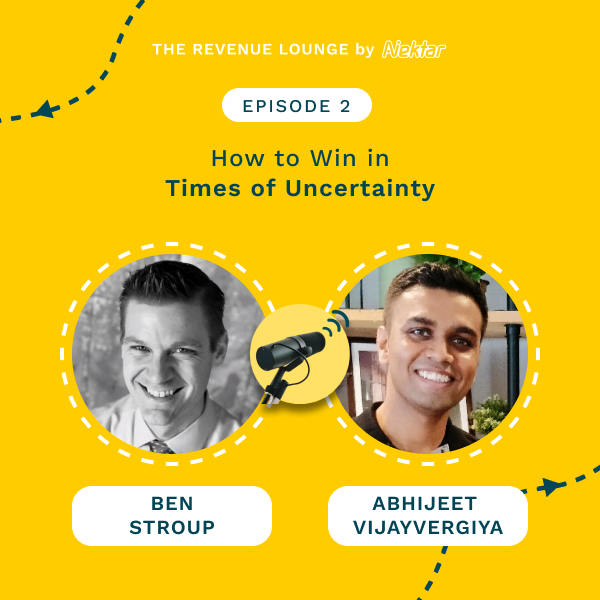
Ep #2: How to Win in Times of Uncertainty
Listen Now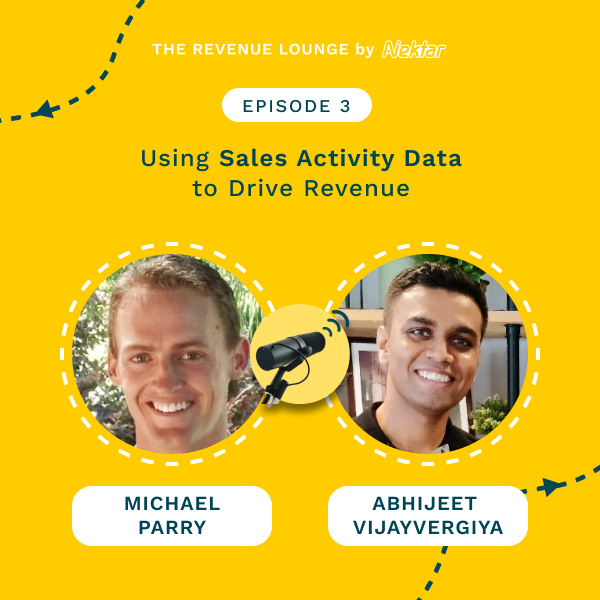
Ep #3: Using Activity Data to Drive Sales Productivity
Listen Now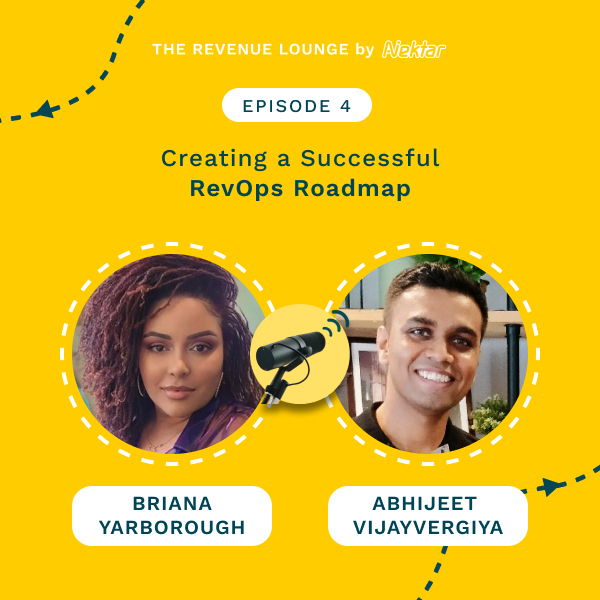
Ep #4: Creating a Successful RevOps Roadmap
Listen Now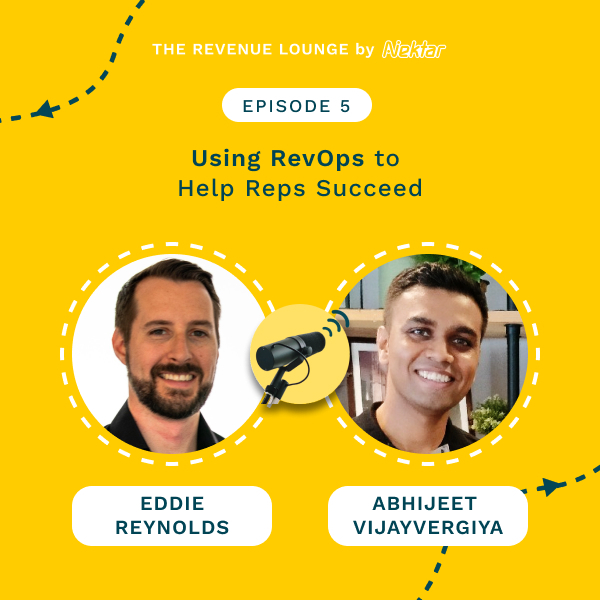
Ep #5: Using RevOps to Help Reps Succeed
Listen Now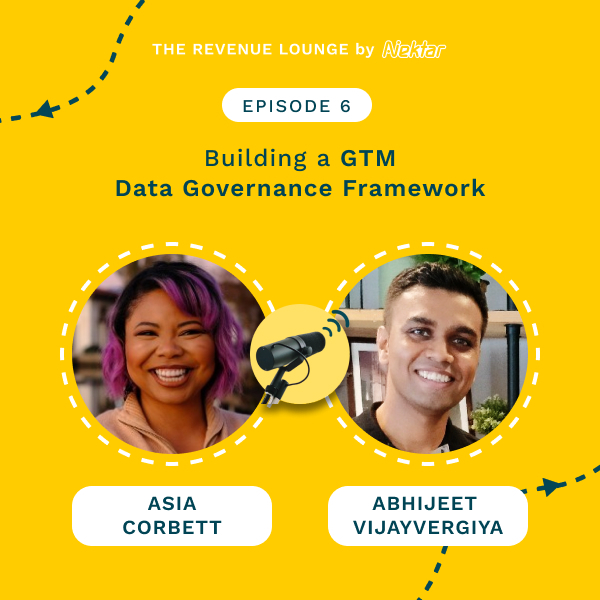
Ep #6: Building a GTM Data Governance Framework
Listen Now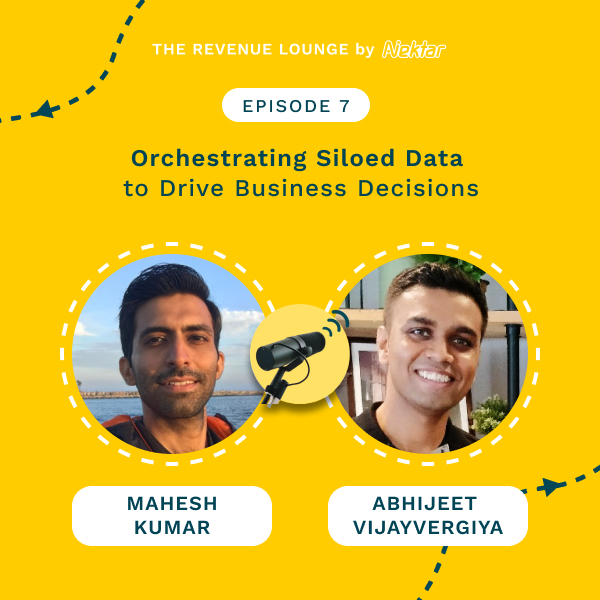
Ep #7: Orchestrating Siloed Data to Drive Business Decisions
Listen Now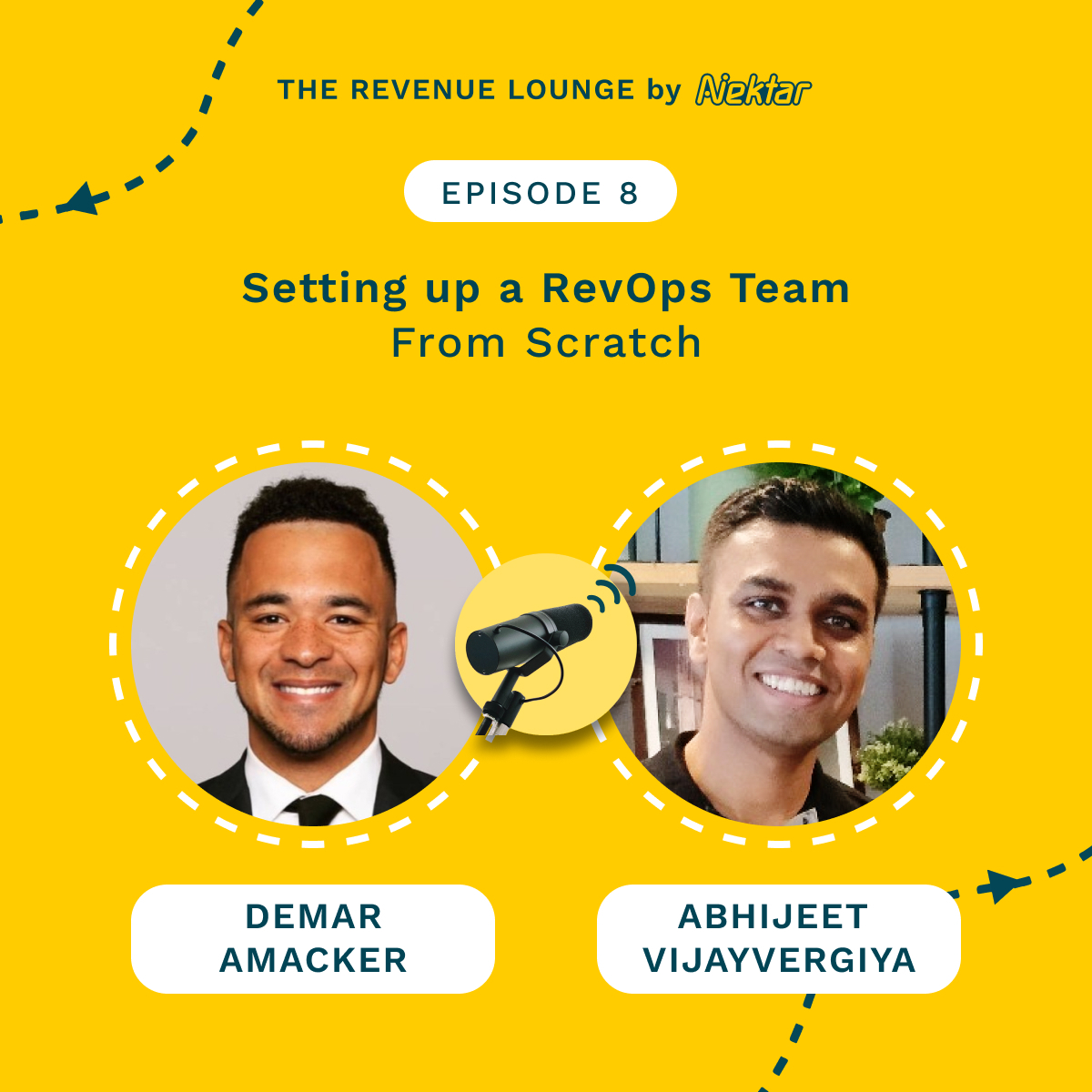
Ep #8: Setting Up a RevOps Team From Scratch
Listen Now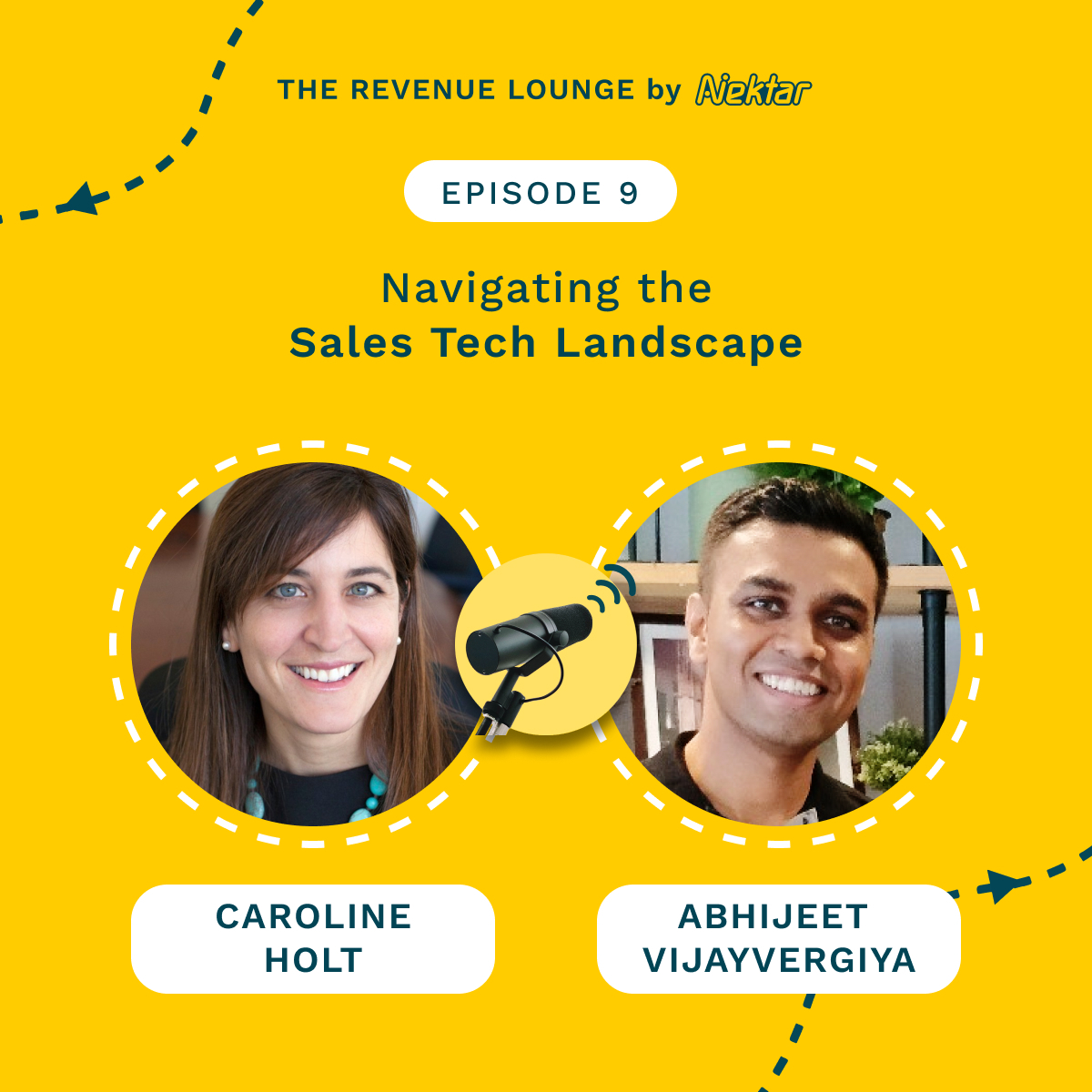
Ep #9: Navigating the Sales Tech Landscape
Listen Now